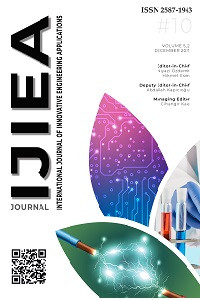Abstract
Mevcut binalarda mekansal, işlevsel, teknik ve ekonomik eskime nedeniyle kullanım süresi dolan bina ve yapı bölümlerinin onarılması, uyarlanması, yenilenmesi, yerinin değiştirilmesi veya yıkılması gerekebilir. Binaların hizmet ömrünü uzatmak için gerekli uygulamalar yapıldıktan sonra, yapıların zemin-yapı etkileşimi ve deprem yükleri altındaki dinamik davranışlarının analiz edilmesi ve doğru sonuçlar elde edilmesi büyük önem taşımaktadır. Bu çalışmada, ilk olarak 1577 yılında inşa edilen ancak tarihi ve kültürel değerlerini korumak ve hizmet ömrünü uzatmak amacıyla sökülüp, taşınarak başka bir alanda yeniden inşa edilen (yer değiştirilen) tarihi Sungur Bey Camii'nin sismik zemin-yapı etkileşim analizi gerçekleştirilmiştir. Büyük can ve mal kayıplarının meydana geldiği Sivrice (2020) depreminden sonra ayakta kalan yığma yapının analizi PLAXIS 3D yazılım programı ile yapılmıştır. Dinamik analizde Sivrice NS (2020) depreminin gerçek kaydı kullanılmıştır. Arazi etüdü çalışmaları sonucunda elde edilen yerel zemin özellikleri sayısal modellemede kullanılmıştır. Analizlerin sonucuna bağlı olarak, yeniden inşa edilmiş bir tarihi yığma yapı üzerinde zemin-yapı etkileşiminin etkileri incelenmiştir. Analizlerden elde edilen sonuçlar yapının mevcut durumu ile karşılaştırılmış ve önemli bulgular ortaya konmuştur.
References
- Reference1 Burat, O. (1973), “Pertek Baysungur Camii’nin Taşınması”, Vakıflar Dergisi, Sayı 10, s. 290-298.
- Reference2 Tükel, A., & Bakırer, Ö. (1970), "1968 Yılı Keban Projesi Restorasyon Çalışmaları Ön Raporu", 1968 Yaz Çalışmalan, Ankara, s. 183-186.
Abstract
In existing buildings, it may be necessary to repair, adapt, renew, relocate or demolish buildings and building parts that have come to the end of their usage period due to spatial, functional, technical and economic obsolescence. After the necessary applications to extend the service life of buildings, it is of great importance to analyze the dynamic behavior of buildings under soil-structure interaction and earthquake loads and to obtain accurate results. In this study, the seismic soil-structure interaction of the historical Sungur Bey Mosque, which was first built in 1577 but was disassembled, moved and rebuilt in another area (relocated) in order to preserve its historical and cultural values and extend its service life, was examined. The analysis of the masonry structure that survived after the Sivrice (2020) earthquake, where the great loss of life and property occurred, was carried out with the PLAXIS 3D software program. The real record of the Sivrice NS (2020) earthquake was used in dynamic analysis. Local soil properties obtained as a result of field investigation studies were utilized in numerical modeling. Depending on the result of the analyzes, the effects of soil-structure interaction on a reconstructed historical masonry structure were examined. The results obtained from the analyzes were compared with the existing state of the structure and important findings were revealed.
References
- Reference1 Burat, O. (1973), “Pertek Baysungur Camii’nin Taşınması”, Vakıflar Dergisi, Sayı 10, s. 290-298.
- Reference2 Tükel, A., & Bakırer, Ö. (1970), "1968 Yılı Keban Projesi Restorasyon Çalışmaları Ön Raporu", 1968 Yaz Çalışmalan, Ankara, s. 183-186.
Details
| Primary Language | English |
|---|---|
| Subjects | Engineering |
| Journal Section | Articles |
| Authors | |
| Early Pub Date | December 30, 2021 |
| Publication Date | December 31, 2021 |
| Submission Date | October 5, 2021 |
| Published in Issue | Year 2021 Volume: 5 Issue: 2 |
Cite
Cited By
Zemin-Yapı Etkileşimini Dikkate Alan Analizlerde Sismik Taban İzolatörünün Etkisi
Türk Deprem Araştırma Dergisi
https://doi.org/10.46464/tdad.1383585
This work is licensed under CC BY-NC 4.0


